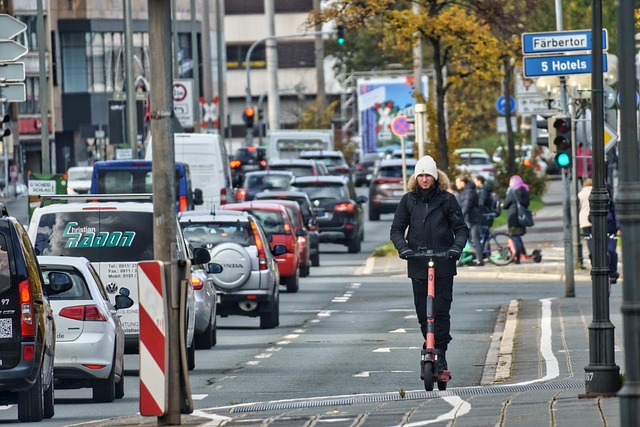Pedaling Progress: Urban Cycling Initiatives for Sustainable Mobility
In recent years, urban cycling programs have surged to the forefront as cities grapple with the dual challenges of transportation sustainability and urban congestion. As we see the effects of climate change, the importance of sustainable mobility becomes even more pronounced. Urban cycling programs don’t simply advocate for cycling as a mode of transport; they embody a transformative vision of cities where movement is efficient, noise levels are reduced, and air quality is improved.
Imagine a world where vibrant bike lanes crisscross bustling urban areas, allowing people to seamlessly commute without the constraints of fossil fuel dependency. Cities like Amsterdam and Copenhagen have long demonstrated how urban cycling programs can lead to significant decreases in traffic congestion and an increase in community well-being. By integrating cycling into the urban transport ecosystem, these cities not only promote physical health through increased activity but also enhance social connectivity among residents. When citizens feel safe and encouraged to cycle, they embrace a lifestyle that benefits both them and the environment.
But urban cycling programs are not limited to metropolitan areas; their principles can extend to rural development as well. As populations in rural areas steadily move towards urban centers, creating accessible cycling networks in these locations can help maintain community ties and promote local economies. From supporting small businesses along cycling routes to encouraging tourism through scenic bike paths, rural cycling initiatives can drive economic progress while preserving cultural heritage and natural landscapes. Such symbiotic relationships remind us that sustainability isn’t merely an urban challenge but a collective responsibility.
Moreover, urban cycling initiatives serve as a springboard for wider discussions around transport sustainability. By placing bicycles at the heart of urban design, cities can reduce their carbon footprints significantly. The need for sustainable transport solutions cannot be overstated in an age where emissions from vehicles contribute heavily to global warming. Urban cycling programs encourage the implementation of green infrastructure, such as bike-sharing systems, which reduce the demand for car travel. In turn, this fosters a shift in consumer mindset as people begin to view cycling not only as a recreational activity but as an indispensable part of their daily lives.
As cities embark on this journey towards sustainable mobility, it’s essential to involve citizens in the planning and implementation phases of urban cycling programs. Community engagement can foster a sense of ownership and ensure that cycling infrastructure meets the actual needs of residents. This bottom-up approach can empower communities to take charge of their local transport policies and advocate for changes that foster inclusivity, accessibility, and safety for all cyclists.
The role of local governments is pivotal in supporting these urban cycling initiatives. By committing resources to improve cycling infrastructure, undertaking safety campaigns, and fostering collaboration between various stakeholders, city officials can create an environment where cycling thrives. This involves not only building dedicated bike lanes but also investing in bike maintenance stations and integrating cycling into public transportation systems, making it more convenient for residents to choose a greener mode of transport.
Ultimately, the push for urban cycling programs redefines how we view mobility in our cities. It inspires an ethos where the bicycle is recognized as a vital, sustainable tool for community development, both in urban centers and in rural areas facing their own unique challenges. By embracing cycling as part of our daily lives, we can contribute to a cleaner, healthier future while simultaneously enriching our communities and fostering economic growth. As we pedal towards progress, let us celebrate every cyclist who represents not just a person on a bike, but a broader movement towards sustainable urban living.



